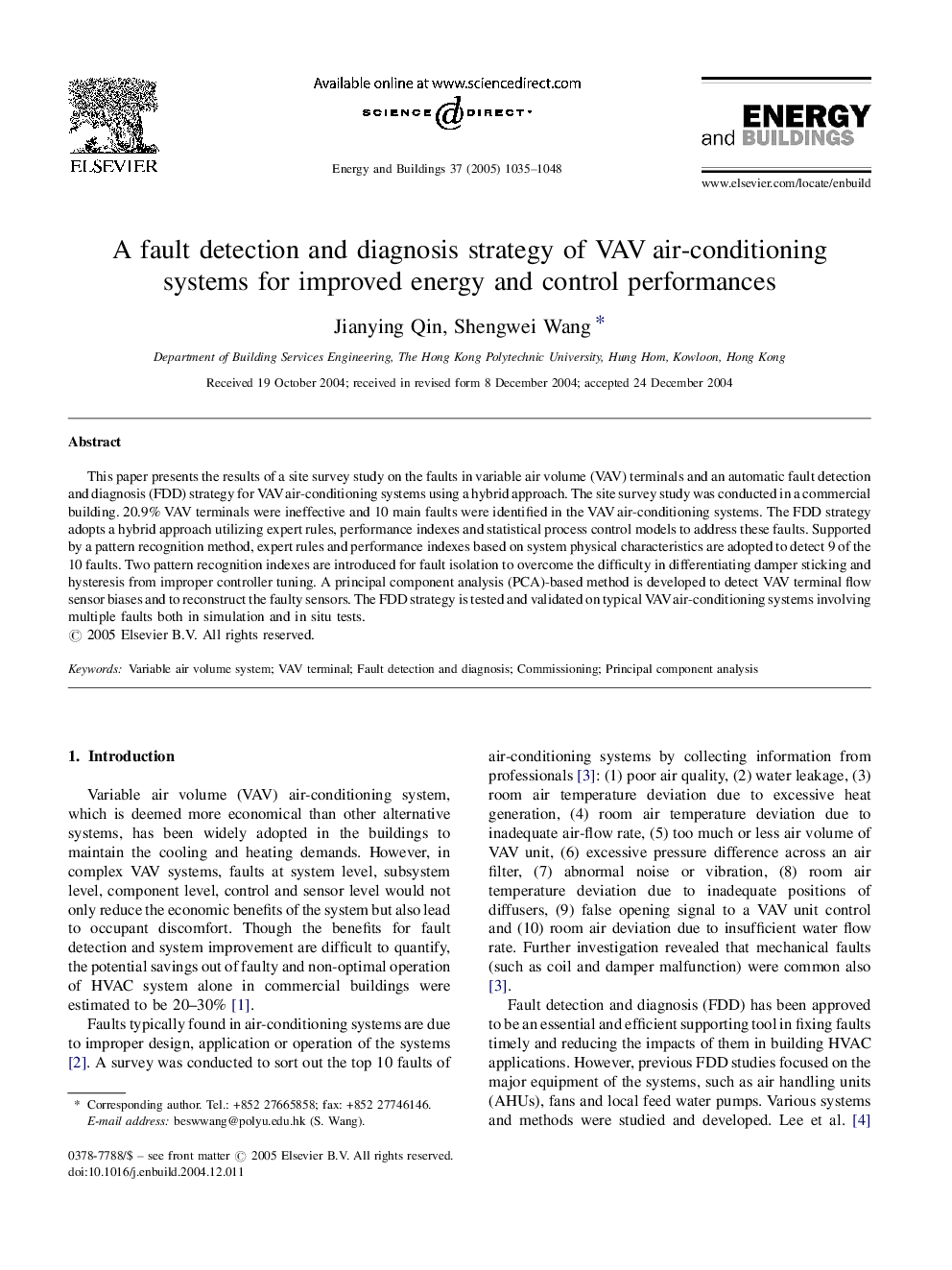| Article ID | Journal | Published Year | Pages | File Type |
|---|---|---|---|---|
| 10286075 | Energy and Buildings | 2005 | 14 Pages |
Abstract
This paper presents the results of a site survey study on the faults in variable air volume (VAV) terminals and an automatic fault detection and diagnosis (FDD) strategy for VAV air-conditioning systems using a hybrid approach. The site survey study was conducted in a commercial building. 20.9% VAV terminals were ineffective and 10 main faults were identified in the VAV air-conditioning systems. The FDD strategy adopts a hybrid approach utilizing expert rules, performance indexes and statistical process control models to address these faults. Supported by a pattern recognition method, expert rules and performance indexes based on system physical characteristics are adopted to detect 9 of the 10 faults. Two pattern recognition indexes are introduced for fault isolation to overcome the difficulty in differentiating damper sticking and hysteresis from improper controller tuning. A principal component analysis (PCA)-based method is developed to detect VAV terminal flow sensor biases and to reconstruct the faulty sensors. The FDD strategy is tested and validated on typical VAV air-conditioning systems involving multiple faults both in simulation and in situ tests.
Keywords
Related Topics
Physical Sciences and Engineering
Energy
Renewable Energy, Sustainability and the Environment
Authors
Jianying Qin, Shengwei Wang,
